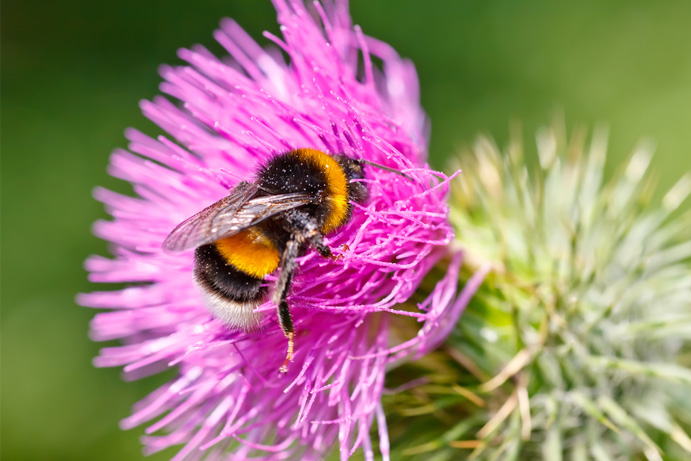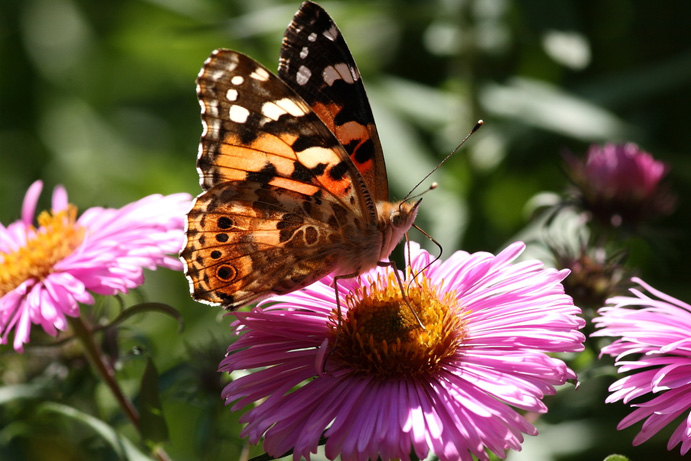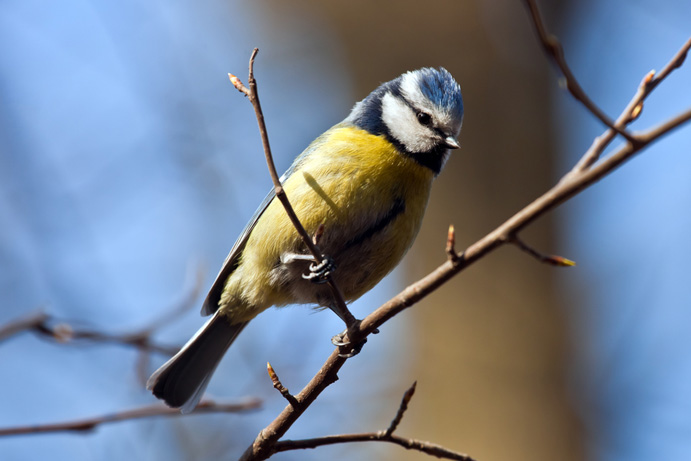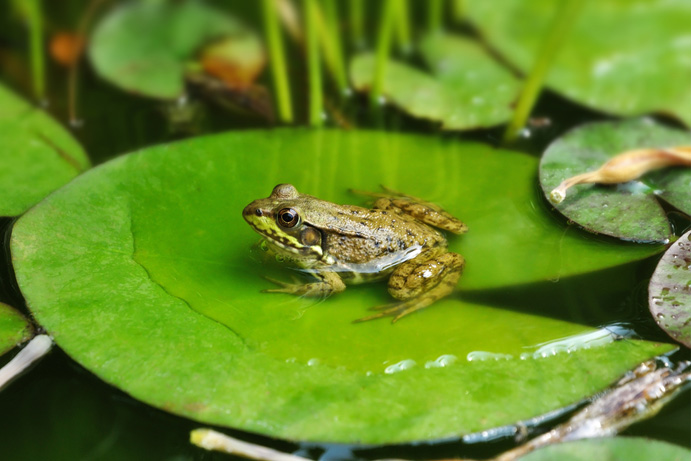August 29, 2022 by Cherry Lane
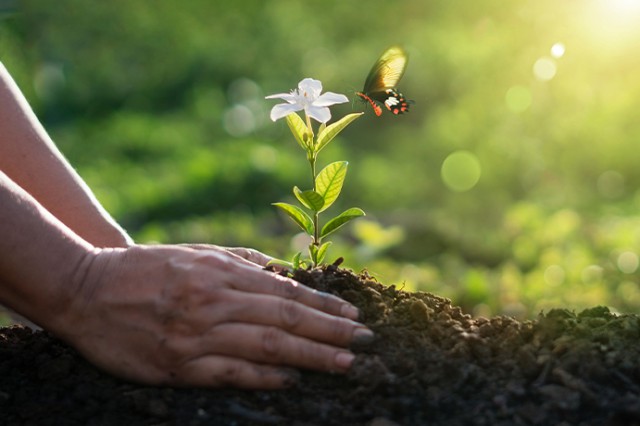
Making Space for Wildlife in Your Garden
By Rachael – Content Editor
Published August 2022
We hear it so much: Butterflies becoming scarce, fewer garden birds than in previous years and to cap it all, bees dying out through harmful agrochemicals and habitat loss. It’s not a good outlook, but as gardeners, we have a chance to help wildlife by creating areas for habitation and providing food, whether in the form of a bee and butterfly-friendly flowering plants, or edible berries for birds or insects for amphibians.
The Bee-friendly garden.
If you’re trying to attract bees, then make sure your garden has many plants that bear the more open types of flowers, that they can fly straight into, without rows of petals barring the way between the bee and the nectar and pollen in the centre of the flower. So, simple flowers are the best – these include the following:
- Shrubs: Berberis; Brachyglottis; Buddleia; Crataegus*; Elaeagnus; Escallonia*; Fuchsia; Hebe*; Lavandula*; Lavatera; Lonicera; Mahonia; Parthenocissus; Potentilla; Pyracantha; Ribes; Rosa (single-flowered); Salix*; Skimmia; Spiraea; Syringa; Viburnum; Weigela.
- Perennials: Achillea; Aquilegia; Astrantia*; Campanula; Centaurea*; Cirsium; Delphinium; Digitalis; Erysimum; Euphorbia; Geranium; Geum; Helleborus; Knautia; Leucanthemum; Monarda; Nepeta*; Phlox*; Primula; Rudbeckia; Salvia; Sedum*; Stokesia; Verbascum; Verbena bonariensis; Veronica.
Choose your plants to provide flowers for as much of the year as possible, including early flowerers like Helleborus and Mahonia which really are crucial sources of nectar when there’s not much else around.
Beekeeping is really popular nowadays, with courses available through local beekeeping groups. While not for everyone, if you have a medium or large garden (and amenable neighbours and family), beekeeping is a very satisfying hobby and helps keep the honey bee population up and healthy.
Other types of bees can be accommodated in the garden too: logs drilled with holes are great for solitary bees, and bumble bee nest boxes can be either bought or made.
Butterflies.
Like bees, butterflies prefer simple flowers that provide lots of nectar. To really increase the butterflies in your area, however, you may want to provide food for the caterpillars! As much as it goes against the grain to invite the little munchers in, bringing in their favourite food may give you pause too:
Stinging nettles are the preferred choice of our most beloved varieties – Red Admirals, Commas, Peacocks and Small Tortoiseshell. Sow some thistles alongside Painted Lady caterpillars.
Butterfly boxes can be bought or made, with long slits where butterflies can enter, and lots of rough surfaces inside for them to hibernate.
Birds.
Many garden shrubs and trees produce berries that birds can fill up on in autumn and winter but also think about plants with flowers that will encourage insects into your garden for other types of birds to eat in the summer and have space to build nests in.
Ivy, when mature, exhibits all 3 of these qualities: In autumn, flowers attract insects for robins and wrens to feed on; in winter, nutritious blackberries provide a feast for a multitude of birds – thrushes, blackbirds, jays and more; In spring, branches and foliage to nest in.
Below are more bird-friendly plants, many of which are good for hedging:
- Hawthorn – long-lasting berries, that attract moth caterpillars in spring;
- Holly, Cotoneaster, Rowan, – Berries
- Honeysuckle – Red berries in autumn, provide shelter, and insect attractant flowers in summer.
- Teasel, Sunflower – great for seed-eating birds like finches and tits.
Amphibians.
Putting in a pond is a great way to increase wildlife, especially frogs and newts, but also a multitude of insects which are food for birds and amphibians alike. If you don’t want a pond, you can still help out frogs and toads that may be passing through your garden by creating shady, moist patches of low perennials, in which they can take refuge. Place piles of logs nearby to amphibian habitation areas or ponds, letting them rot and become insect hotels.
Flower Seeds | Gardening Tools | Back to Home
Keep in touch!We would love to hear more from you! Follow us on social media and share your Cherry Lane buys with us!



